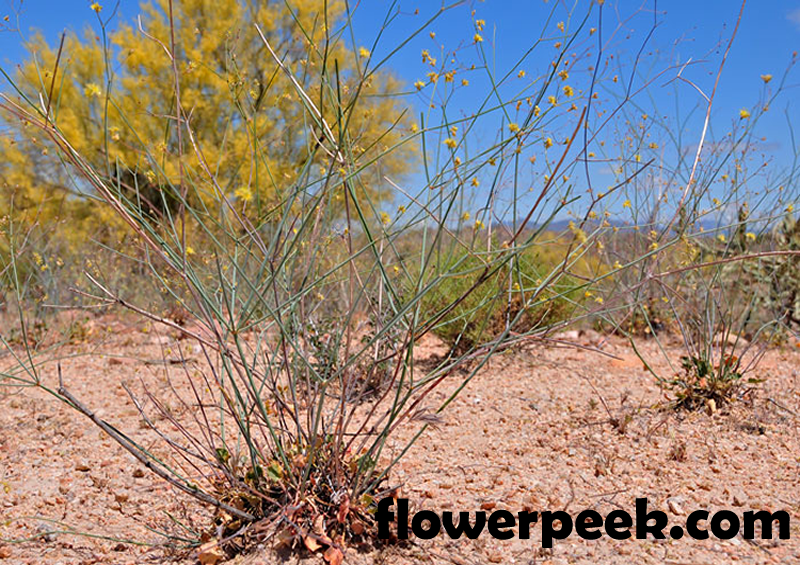The desert trumpet plant is also
known as Native American pipeweed or bottlebush, the scientific name is Eriogonum
inflatum and the plants are native to the arid climates of the western and
southwestern United States. The desert trumpet plants have actually developed
interesting adaptations that distinguish them from other plants and allowing
them to survive in punishing environments. Just continue reading to learn more about
desert trumpet plant, including the plants growing conditions.
Eriogonum Inflatum Info
Each Eriogonum inflatum displays a
few spindly, nearly leafless, grayish green stems (or sometimes a single stem).
The upright stems of the plant rise above basal rosettes of crinkly,
spoon-shaped leaves. Each of the plant stem has an odd-looking inflated area
(thus the alternative name “bladder stem”). For many years, experts believed
the inflated area, which measures about an inch (2.5 cm.) in diameter – is the
result of an irritation caused by a larva that burrows in the stem. However,
botanists now believe the swollen area holds carbon dioxide, which benefits the
desert trumpet plant in the process of photosynthesis.
Just above the inflated area the
stems branch out. Following summer rainfall, the branches display clusters of
small, yellow flowers at the nodes. The desert trumpet plant’s long taproot
provides moisture for several seasons, but the stem eventually turns from green
to reddish brown, then to pale yellow. At this moment, the dry plant stems
remain upright for some years. The desert trumpet seeds provide forage for
birds and small desert animals, and the dried plant stems offer shelter. The desert
trumpet plant is pollinated by bees.
Eriogonum Inflatum Growing
Conditions
The desert trumpet plants grow in low
elevations in deserts, mainly on well-drained sandy, gravelly, or rocky slopes.
The desert trumpet plant tolerates heavy, alkaline soil.
Can You Grow Eriogonum inflatum?
You can actually grow the desert
trumpet plants if you live in USDA plant hardiness zones five through ten and if
you can provide plenty of sunlight and well-drained, gritty soil. However, the desert
trumpet seeds are difficult to find, but most nurseries that specialize in
native plants may be able to provide information. If you live near wild plants,
you can try to harvest a few seeds from existing plants, but make sure not to
over harvest this important desert wildflower. Plant the desert trumpet seeds
in sandy compost, if possible in a greenhouse or warm, protected environment.
Transplant the desert trumpet seedlings into individual pots and then keep them
in the warm environment for their first winter, and then plant them outdoors in
spring or early summer, after all frost danger has passed. Make sure you handle
the desert trumpet plants carefully because the long taproot does not like to
be disturbed.



Post a Comment